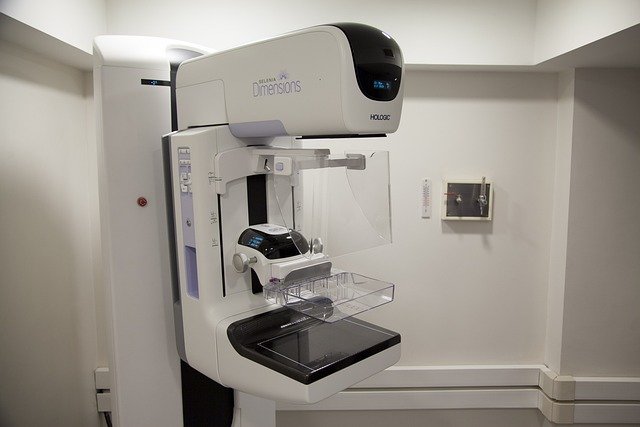Triple Negative Breast Cancer: Key Symptoms and Early Signs
Triple Negative Breast Cancer (TNBC) is a particularly aggressive form of breast cancer characterized by the absence of three receptors commonly found in other breast cancers: estrogen, progesterone, and human epidermal growth factor receptor 2 (HER2). This absence makes TNBC challenging to treat since many standard breast cancer treatments target these receptors. Recognizing the early signs and symptoms of TNBC is crucial for prompt diagnosis and treatment, potentially improving outcomes for those affected by this disease.

Common Signs and Physical Symptoms of TNBC
The physical manifestations of Triple Negative Breast Cancer often resemble those of other breast cancer types. The most common symptom is a new lump or mass in the breast tissue. Unlike many benign breast lumps, TNBC tumors frequently feel hard, irregular in shape, and may be painless. Other physical symptoms include changes in breast size or shape, skin dimpling or puckering resembling an orange peel texture (peau d’orange), nipple inversion or discharge, and persistent breast pain or tenderness. Some patients report a noticeable difference in how the affected breast feels compared to the other, with TNBC tumors sometimes growing more rapidly than other breast cancer types.
Early Indicators That May Signal TNBC
While TNBC doesn’t present with unique symptoms that differentiate it from other breast cancers, certain patterns may raise concern. Unexplained redness, swelling, or warmth in the breast may indicate inflammatory breast cancer, which can be triple negative. Skin changes such as thickening, redness, or increased sensitivity might appear before a noticeable lump forms. For younger women, who are statistically more likely to develop TNBC than other breast cancer types, any breast abnormality warrants prompt medical attention. Since TNBC tends to be more aggressive with a faster growth rate, changes may occur more rapidly than with other breast cancer types. Early detection remains critical, as symptoms that persist for more than a few weeks should be evaluated by a healthcare provider.
Understanding Risk Factors and Prevention
Several factors increase the risk of developing Triple Negative Breast Cancer. Age plays a significant role, with TNBC more commonly diagnosed in women under 50. Genetic predisposition is another major factor, particularly BRCA1 gene mutations, which significantly increase TNBC risk. African American and Hispanic women face higher TNBC incidence rates compared to other ethnic groups. Previous pregnancy history also influences risk—women who haven’t had children or had their first pregnancy after age 30 may face elevated risk. While some risk factors cannot be modified, preventive measures include maintaining a healthy weight, regular physical activity, limiting alcohol consumption, and avoiding smoking. Regular breast cancer screening remains essential, especially for those with multiple risk factors, though standard mammography may be less effective at detecting TNBC in younger women with dense breast tissue.
Diagnostic Procedures and Testing
When TNBC is suspected, healthcare providers employ multiple diagnostic approaches. The process typically begins with a clinical breast examination and imaging studies such as mammograms, ultrasounds, and possibly magnetic resonance imaging (MRI). These tests help identify suspicious areas, but definitive diagnosis requires tissue sampling. This typically involves a biopsy—either a needle biopsy that extracts cells or tissue samples, or a surgical biopsy that removes more substantial tissue. Laboratory analysis determines whether the sample is cancerous and, if so, identifies its specific type. For TNBC diagnosis, immunohistochemistry tests reveal the absence of estrogen receptors, progesterone receptors, and HER2 protein overexpression. Additional tests may include genomic assays to identify specific genetic mutations and staging procedures like CT scans, bone scans, or PET scans to determine if cancer has spread beyond the breast.
Treatment Options and Approaches
Treatment for Triple Negative Breast Cancer typically involves multiple approaches, with chemotherapy playing a central role due to the limited targeted therapy options. Surgery—either lumpectomy (removing the tumor while preserving breast tissue) or mastectomy (removing the entire breast)—is usually performed to remove the cancer. Chemotherapy may be administered before surgery (neoadjuvant) to shrink tumors or after surgery (adjuvant) to eliminate remaining cancer cells. Radiation therapy often follows surgery, particularly after breast-conserving procedures, to destroy residual cancer cells. Recent advances have introduced promising treatments specifically for TNBC, including PARP inhibitors for patients with BRCA mutations, immunotherapy options that help the immune system target cancer cells, and clinical trials investigating novel targeted approaches. The treatment plan is individualized based on cancer stage, tumor size, patient age, overall health, and personal preferences.
This article is for informational purposes only and should not be considered medical advice. Please consult a qualified healthcare professional for personalized guidance and treatment.




